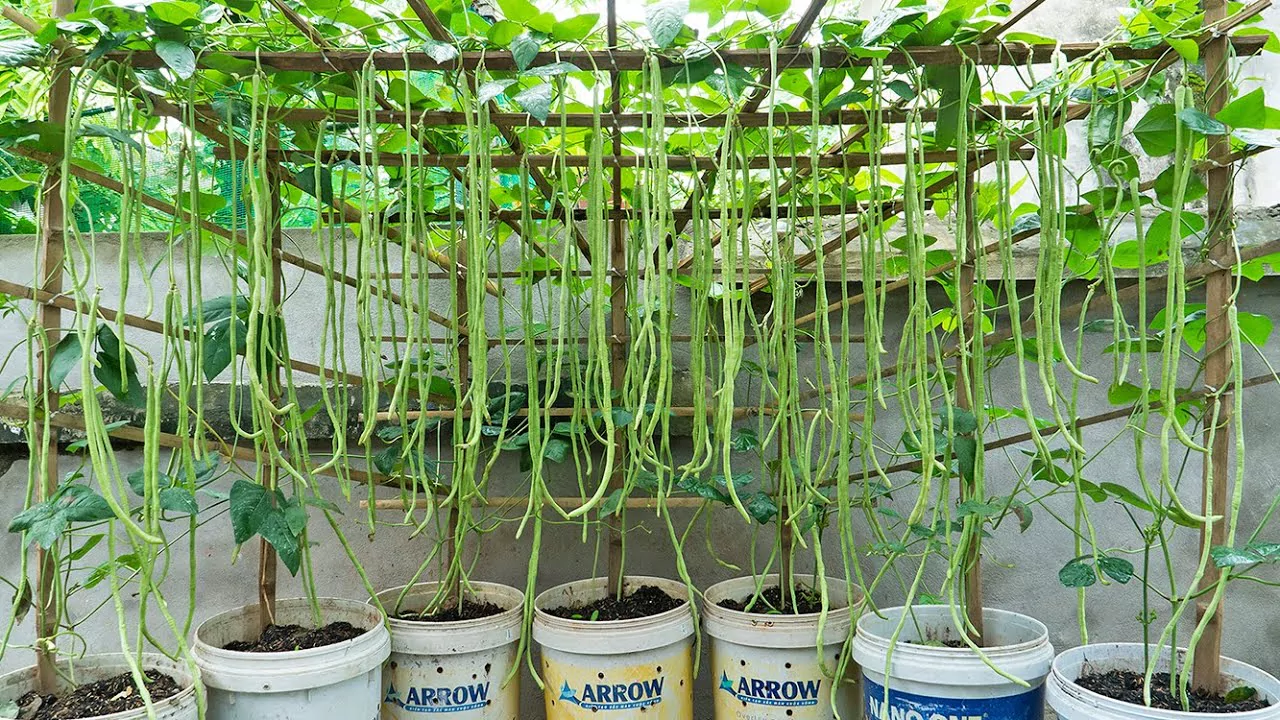
Green beans (Phaseolus vulgaris) are an extremely well-liked warm season vegetable among home gardeners. Moreover, green beans are a wholesome, easy-to cultivate crop and are quite productive.
Green beans flourish both indoors and outdoors. When placed in pots, beans thrive in containers. Therefore, you can enjoy their soft taste and crispy snap even if you don’t have a parcel of land.
This is what makes them popular options for urban gardeners.
Types of Green Beans Suitable for Growing in Containers
There are two major types of green beans: pole beans and bush beans.
Both pole beans and bush beans are container friendly. However, differences, however slight, do exist and can influence one’s choice of variety that suits them best.
1. Bush Beans
Bush beans, or dwarf beans, are short and stocky. Unlike other beans, this variety grows in a bush form of two feet tall and does not require strategic support like trellising.
Due to their short harvesting period, these beans have gained much popularity among commercial farmers.
Bush beans can be a great option for beginner gardeners, as they are easy to cultivate. These types of beans are best suited for individuals who do not intend to use supports, such as trellises, with their container plants.
The best-suited bush bean varieties for growing in containers are:
- Contender
- Kentucky Bean
- Purple Teepee
- Top Crop
2. Pole Beans
These are the tall, vining bush beans. They have twisting vines which are climbers and require vertical support.
It is safe to assume that the “beanstalk” Jack climbed up was a pole bean growing up a pole, though it is not specified.
As the name suggests, pole beans are fast growers and can easily shot up to or vine around any nearby supports. This makes them ideal for home garden locations, especially those with limited space. While they do require a certain amount of vertical room, they mostly take up vertical space.
Their vertical vining growth pattern contributes to their aesthetic appeal, and the beans can be harvested with ease.
What is the Best Way to Grow Green Beans?
If you are concerned about space in your garden area, or if you prefer to keep your garden well organized, using pots is a great way to grow a delicious crop of green beans.
The following step by step guide will help you begin your own potted green bean patch.
Container Instructions for Green Bean Cultivation:
1. Choose the Right Container for Growing Green Beans
To grow green beans, one must ensure sufficient depth in the container to facilitate adequate growth. The correct depth is specific to the type of bean you wish to cultivate.
Pole beans require 8 to 9 inches and bush beans 6 to 7 inches.
When cultivating vegetables, your container should be bigger—this is due to ease of moisture retention.
Your containers should also have adequate draining holes. 2 to 3 holes per planter should suffice. But ensure the holes aren’t too big.
Covering these holes with wire or plastic mesh prevents soil loss while lining the pot bottom with an inch of small stones also suffices.
Good planters include wooden barrels, pots, and unglazed terracotta which allow for moisture regulation and prevent water logging.
2. Prepare your Potting Mix
As with most container crops, potting soil is important in growing green beans. Fertile, moisture-retaining soils that are rich in organic matter support successful growth.
You can either buy a ready made potting mix, or create your own from scratch.
To create your own potting mix, blend equal quantities of compost, garden loam, and clean coarse builder’s sand. Make sure to add organic manure to the soil and mix well.
Alternatively, you can use peat moss with perlite or compost mixed with pasteurized soil in equal parts.
Pasteurized soil is important to preventing the introduction of weeds and pathogens to the potting mix.
Green bean plants thrive in soils with a pH of 6.0 to 7.0. That is, neutral to slightly acidic. You can use pH strips to measure your potting mix to ensure it is within the recommended range.
Remember to incorporate some organic manure or vegetable fertilizer into the mix before planting.
What are the Necessary Conditions for Green Beans?
Growing beans is a straightforward process. However, providing warm temperatures can help guarantee a plentiful harvest. For example:
In their natural habitat, beans are annuals in temperate or subtropical regions. They thrive in warm climates with ambient temperatures of 65°F to 85°F.
For optimal germination, plants should reach an ambient temperature of 70°F to 80°F. Additionally, if your growing medium is below 60°F, it is likely that seeds will rot before sprouting.
Temperature above 70°F paired with full sun is required for green beans to thrive. At least six to eight hours of direct sunlight is essential. Anything less will hinder production.
How Long Does it Take to Grow Green Beans?
Most varieties of green beans take around 60-70 days to mature.
Tip: For a continuous supply of beans, plant your beans every two weeks until mid-summer, but make sure that your last crop is sown in time to mature before the average first frost date.
How to Sow Green Beans in Containers
The frost-free timeframe marks the ideal window for sowing green bean seeds, which should be done once warm weather sets in during early spring. Low temperatures and frost pose a serious risk to green beans.
Keep the following steps in mind to sow green beans:
- Do not fill the planter beyond 2 to 3 inches from the top while adding your potting mix. Make sure to moisten the soil thoroughly.
- Set up the trellises, stakes, and teepees in the plater if you are growing pole beans. However, bush beans don’t need support. Set these up at or before planting time so you don’t disturb the delicate roots later on.
- Place individual bean seeds into the planter and cover with about 2 inches of soil.
- Space pole beans about 2 to 3 inches apart
- Space bush beans about 4 to 6 inches apart
- As is the case with many other plants, the planters should initially be kept in places that receive ample sunlight. During the first 2 to 3 weeks, frequent watering to maintain even moisture is a must. After a few weeks, watering can be done as per schedule with the topsoil being dry. The beans are expected to sprout within 5 to 8 days.
Plant pole beans around the stakes. Use 7-foot-long bamboo poles or straight branches as stakes.
You can also make a teepee by splaying the bottoms of three or four poles after tying them together at the top.
Once the vines are trained, you can plant around the base of the stake or teepee and train the vines to wind up the poles for support.
Besides frost, strong winds can be an issue, especially for young beans.
Make sure to place your containers in safe locations to protect them from strong winds.
In addition, once the seedlings have sprouted, you can apply a layer of mulch to the soil around the seedlings. This helps retain moisture and prevents weed growth, especially if non-pasteurized soil was used.
Are Green Beans Easy to Grow?
Green beans do require some maintenance compared to other plants, but once established, they are easy to care for. Here are some tips to ensure your plants stay healthy and increase yields:
- Water them regularly: Beans require significant amounts of water, especially during the flowering stage. It is important to check if the soil is dry at a depth of two or three inches. If so, water and use mulch to retain moisture. Failing to properly hydrate the beans will cause them to stop flowering and reduce yields.
- Give them sun: As stated previously, beans require full sun. Healthy growth and maximum yields require at least six to eight hours a day. In small spaces, sunlight tends to be more abundant at higher levels. Try to place your beans so that they can grow into more sun as they develop.
- Feed your green beans: Apply a balanced liquid fertilizer at half strength once a month. Skip this step if you used slow-release fertilizer in your potting mix at planting time. Some composted manure is good in place of liquid fertilizer, but care should be taken to ensure moderation. too much nitrogen-rich fertilizer can disrupt yields by stimulating excessive foliage.
- Pinch out the tops: For pole beans, when they reach the top of the pole, pinch off the tops of the vines. This helps the plant redirect energy towards pod production.
- Pick the pods: You must pick the bean pods regularly to promote new growth. Plus, it is a bonus that small green beans are tend more tender and delicious.
- Weed your beans: As with all plants, beans will have weeds that require managing from time to time. However, make sure not to injury or disturb the shallow roots of the beans.
Harvesting Potted Green Beans
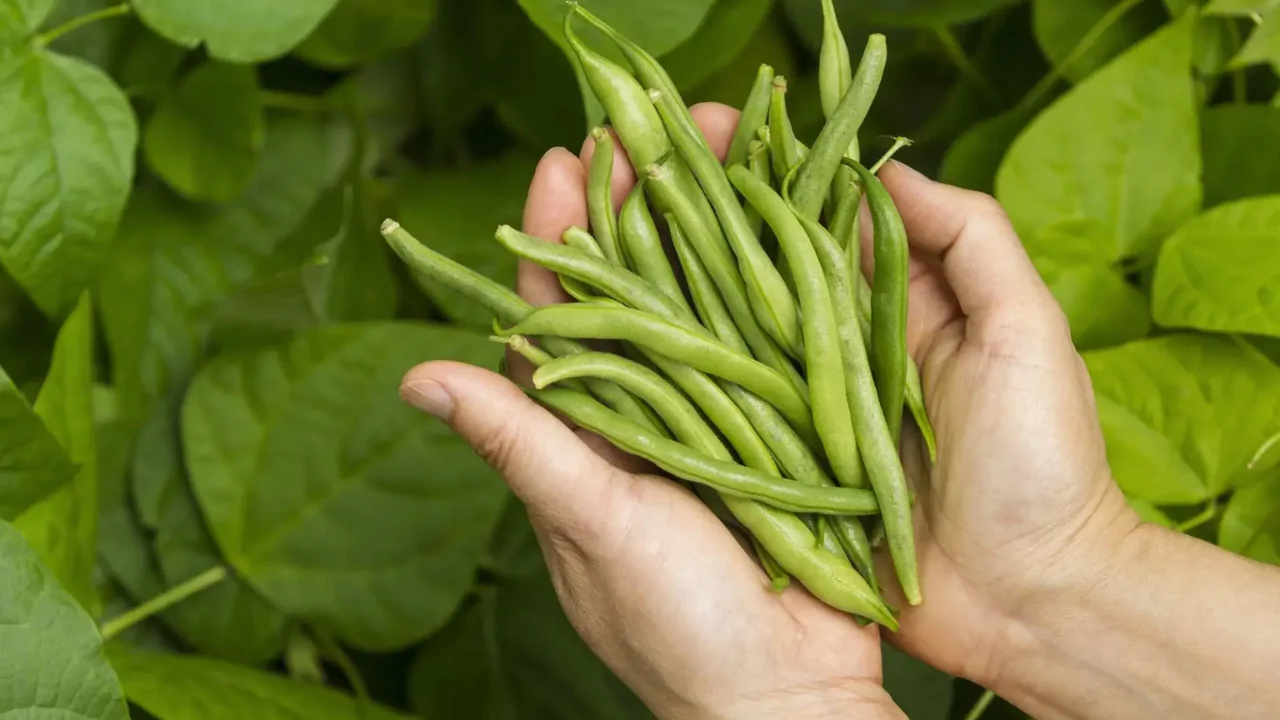
The bean pods can be picked when they reach 3 to 4 inches, which is approximately 45 to 65 days after planting, although this varies based on plant type and environmental conditions.
Bush beans tend to mature more or less at the same time. They will produce pods for several weeks, and then stop.
You may pick all the pods once they are mature, but harvesting requires some careful searching within the leafy bushes to locate the beans.
On the contrary, pole beans provide more gradual yield. They continue to produce during the growing season, making harvesting simple. In addition, regular harvesting of the pods helps prolong the green beans growing season and increases productivity.
Harvest the green beans when the pods reach approximately 3 inches with firm texture. Waiting too long would result in tough beans.
Pests and Diseases Control in Green Beans
One of the simplest vegetables to grow in pots is green beans, but achieving this requires keeping them healthy and free from pests.
Certain varieties of the plant, particularly pole beans, are susceptible to several plant diseases. It is prudent to plant the varieties that tend to have fewer pest problems within your region.
For information on resistant cultivars, call your local cooperative extension service.
To find your closest extension service office, visit the U.S Department of Agriculture website.
The green bean pests and diseases that are most common include:
1. Aphids (Aphididae spp.)
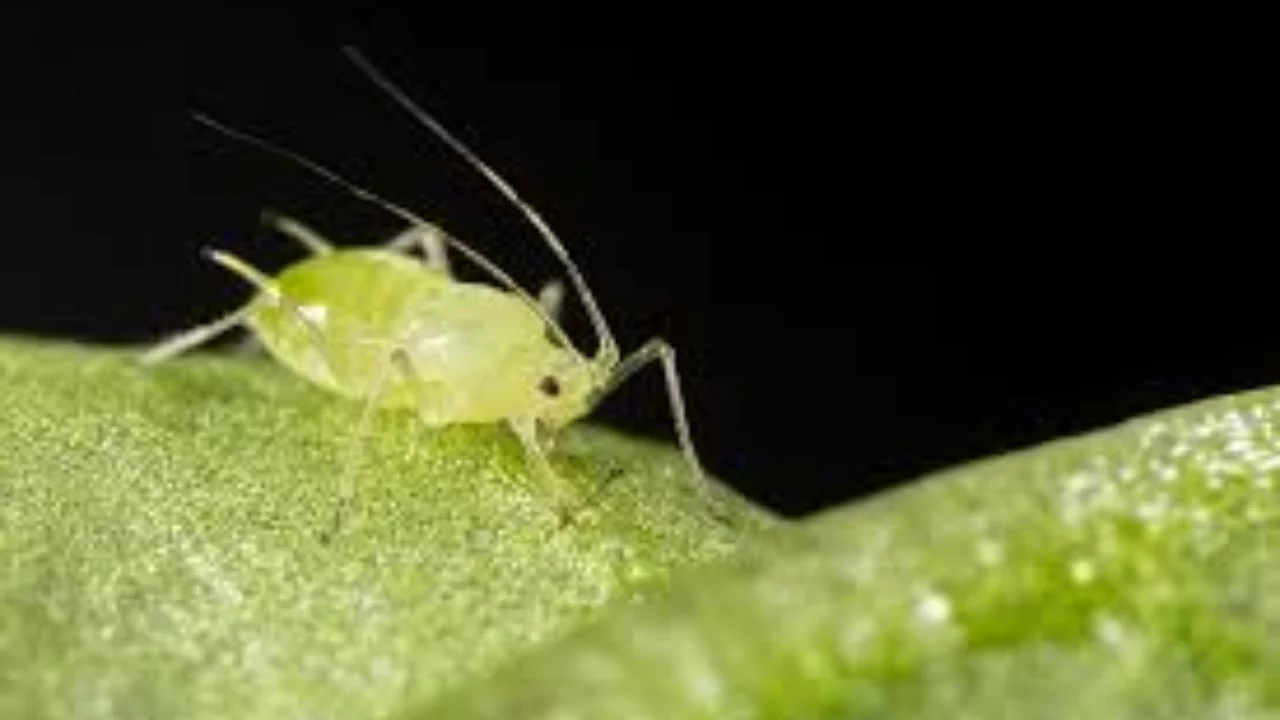
These tiny insects cause stunted growth and wreak havoc on your plants by sucking sap from them. They are more common during cool and dry weather.
You can control the spread of aphids by:
- Spraying your plants with horticultural soap.
- Watering the leaves with strong jets of water.
You can also pinch of infested tips and destroy them in milder cases.
2. Bean Leaf Beetle (Cerotoma trifurcata)
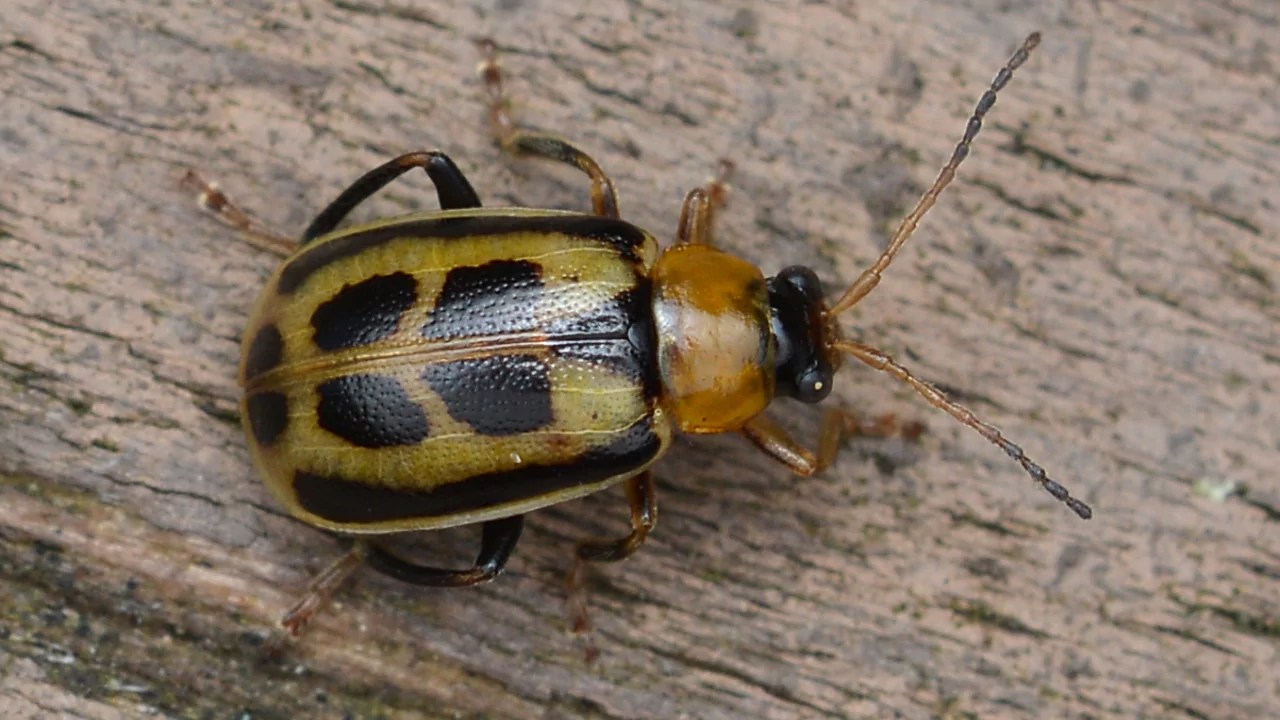
These oval shaped pests feature red, yellow, and black markings. Adult beetles have a triangle at the top middle of their wing covers.
Bean leaf beetles cause damage by feeding on the tops of leaves and pods, creating small holes.
You are able to manage this type of beetle by manually removing them from your plants and placing them in soapy water.
3. Slugs and Snails
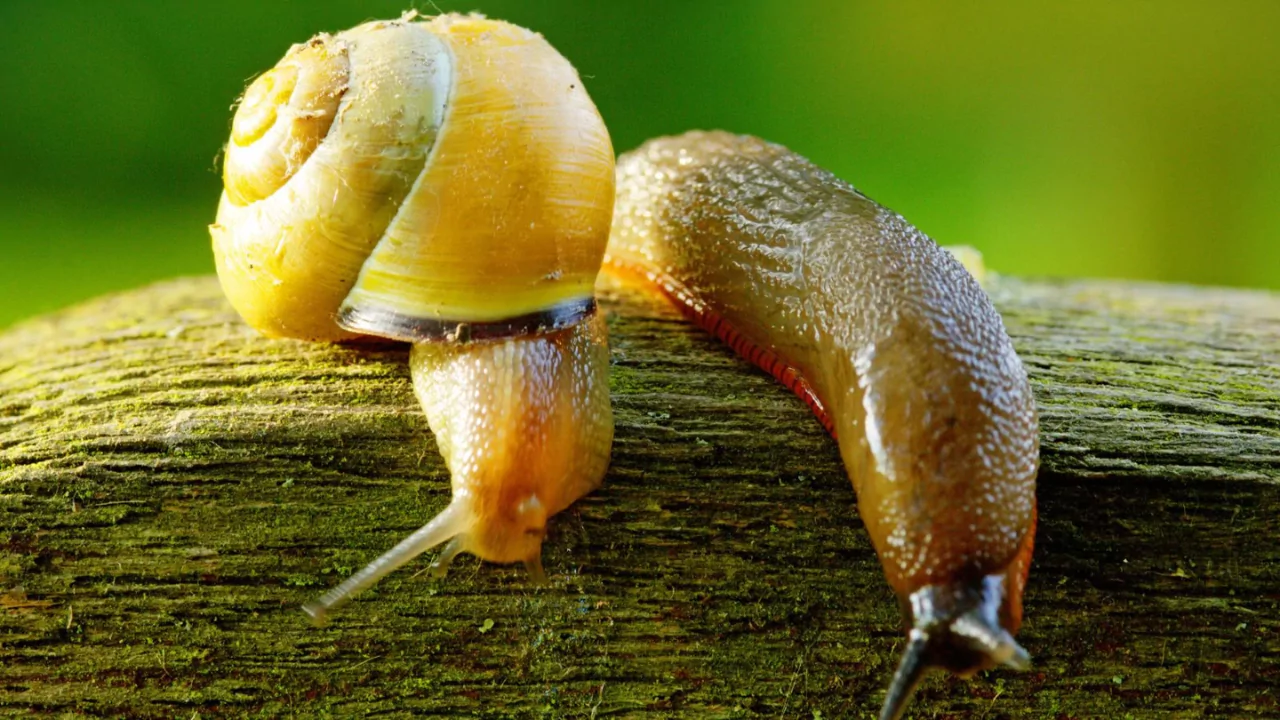
Young seedlings are susceptible to damage from both slugs and snails. If you have slugs, you’ll likely notice a slimy trail on your plants and leaves.
Click here for more information on how to control slugs and snails.
4. Bean Rust
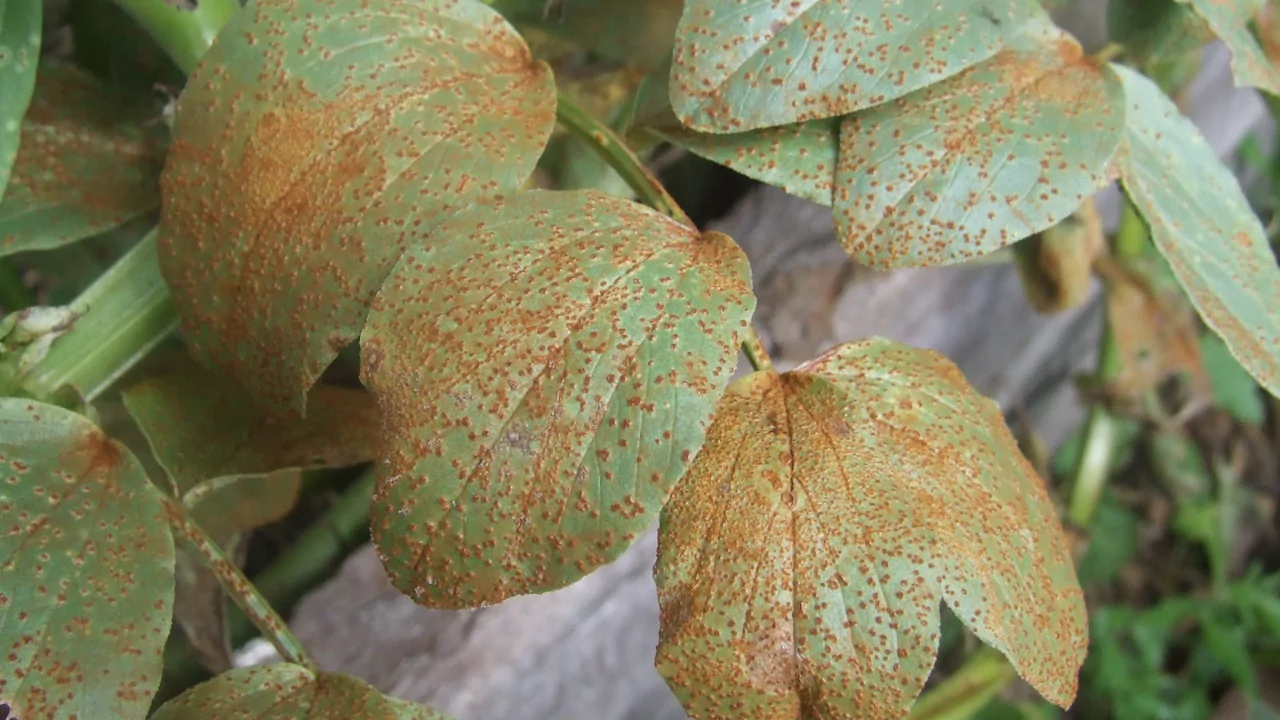
A fungal infection known as bean rust is caused by the fungus Uromyces appendiculatus.
The fungus flourishes in warm, humid weather with temperatures between 60° to 75°F.
Bean rust infections lead to the formation of white or yellow spots on leaves. Over time, these red-brown pustules with yellow halos form around the spots.
If infection is noticed, prune the infected areas and apply fungicide. In case of advanced infections, all infected plants should be removed and destroyed.
You can prevent the spread of bean rust by:
- Ensuring proper air circulation
- Watering at ground level to avoid splashing
- Planting resistant varieties
5. Bean Common Mosaic Virus (BCMV)
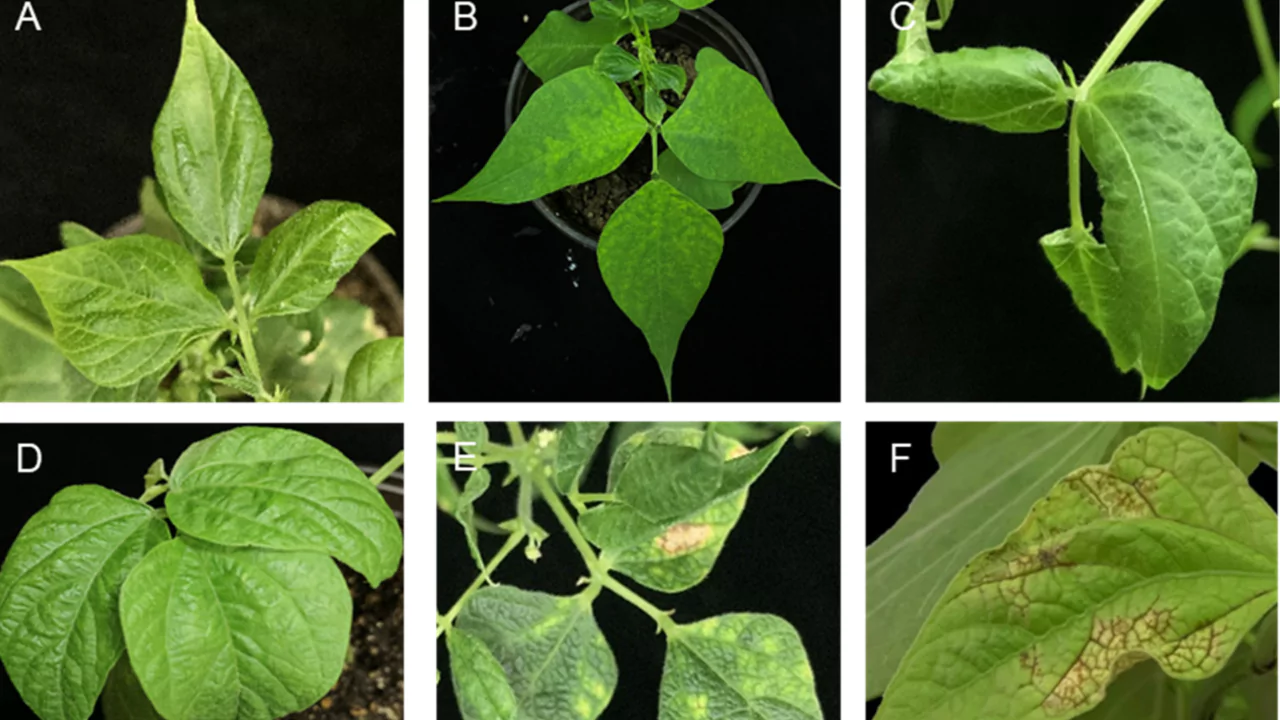
BCMV is mostly transmitted through seeds, although it can also be transmitted by aphids.
The best way to avert an infection is to cultivate a resistant cultivar.
In case infection occurs, eradicate all infected materials, including subterranean parts, and incinerate them.
Symptoms of BCMV include:
- Mottled patterns on leaves
- Distorted leaves
- Yellow spotting
- Stunted plants